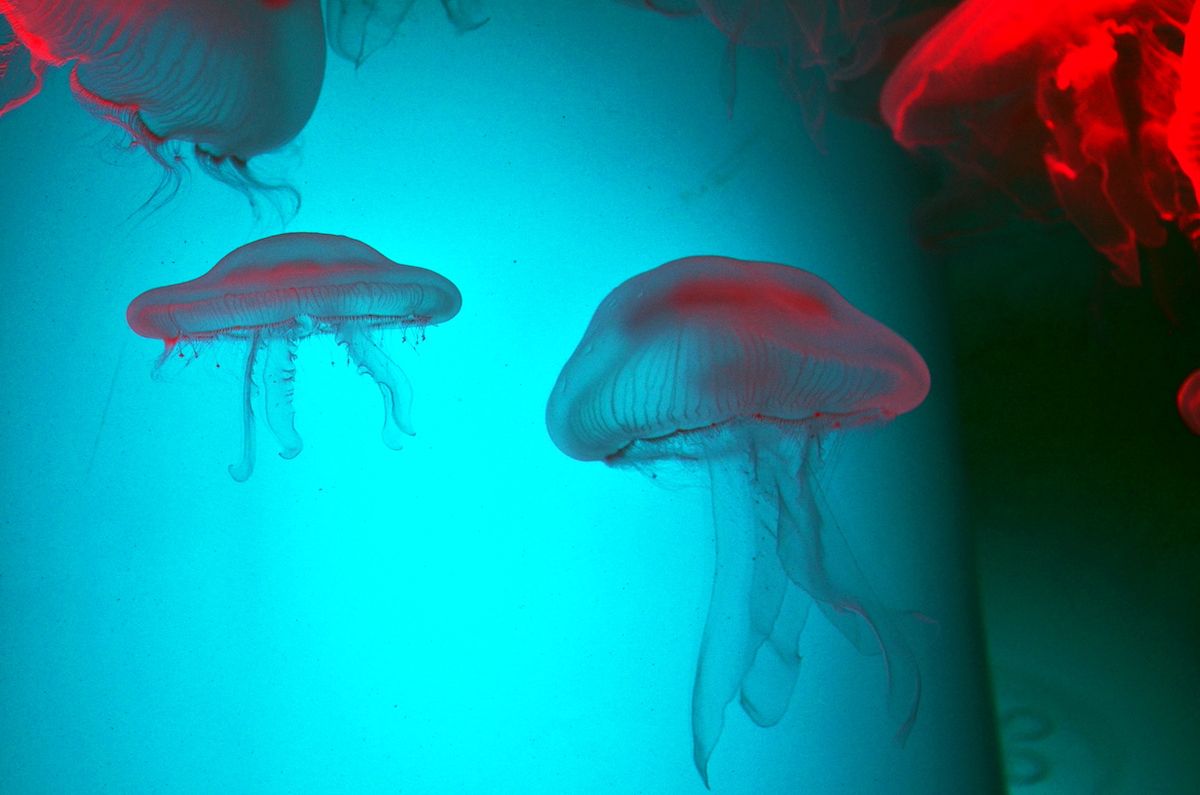In December 2015, Australian-based photographer Tim Samuel captured a “never before seen photo” of a live fish trapped within a jellyfish and quickly became an Instagram sensation when he shared his photographs to social media.
The photograph showed a small, yellow oceanic fish in the belly of a transparent jellyfish with purple tentacles. And because of its unique depiction of marine life, the picture went viral after publications like Science Alert and National Geographic showed the “curious scene.” The photographs made ripples on social media again in 2021 when The Arts, a lifestyle and culture Facebook page, reshared a 2016 article published by the culture website My Modern Met to its Facebook page. At the time of this writing, the post had garnered more than 80,000 likes.
Snopes contacted the California Academy of Sciences in San Francisco, which confirmed that the photo was authentic. According to Academy Curator of Ichthyology Luiz Rocha, the fish is a juvenile trevally of the scientific family Carangidae, but it is hard to identify the specific species because “juveniles of that group look very similar.”
Samuel said at the time that he was free-diving in Byron Bay, a beachside town in the northeastern corner of New South Wales, Australia.
“I found a fish inside a jellyfish! He was trapped in there, but controlled where the jellyfish was moving,” wrote Samuel in a post shared to Instagram on Dec. 8, 2015.
Nearly 2,000 species of jellyfish are known to exist in oceans around the world, all of which have stinging cells. These jellyfish belong to the aquatic invertebrate group cnidarians (which includes box jellies) and are pursuit predators that ambush or stalk prey. Citizen science page JellyWatch noted that jellyfish consume many organisms in the sea, including small plants known as phytoplankton, tiny crustaceans known as copepods, fish eggs, and even other small fish.
And though Samuel’s observation is rare, it’s not unheard of. Rocha said that similar occurrences of jellyfish consuming small fish have been observed before — just take a look at the video below that Samuel posted with the following caption:
@franny.plumridge and I were starting to think we were the only ones to witness anything like my Fish Trapped in a Jellyfish photo. That was until this afternoon when I received a very exciting email "I too have witnessed this rare phenomenon. I captured it on video while snorkeling at Double Reef beach in Guam in 2013. Over the course of several minutes I watched the fish exit the Jellyfish, swim back inside the Jellyfish, and apparently steer the Jellyfish at will, and repeat. I researched the unusual behavior when I first encountered it, however could not find anything on the internet to explain the behavior. Perhaps others will communicate their experiences and a collaborative understanding of this behavior will immerge" - words and video from Brent Collins
But what remains unclear is whether the fish was “steering” the jellyfish, or if the jellyfish was making a quick snack of the tiny fish. Snopes sent the photograph to Lisa-ann Gershwin, a jellyfish expert of the Australian Marine Stinger Advisory Services, who said that she was not able to identify the species but thought that it resembled a species called Thysanostoma.
“But that’s really only because I don’t know of anyone else with ‘tentacles’ like that. (In Thysanostoma they aren’t tentacles, they’re what we call ‘oral arms’),” said Gershwin. “But nothing else adds up. The jellyfish bell is the wrong color and so distorted, presumably from having a big ol’ whomping fish living inside it, that none of the other features are diagnostic for any other species I know.”
Thysanostoma is found to the north and south of where the photographed jellyfish-fish duo was seen and though it’s “entirely plausible” that the two are of the same species, Gershwin noted that there is not enough additional information to confirm identification.
“The other confounding factor here for me is that we still have so many new species of jellyfish being found in Australia, that it is entirely plausible to me that whatever that species would look like in its normal, un-fish-passenger state could turn out to be new to science, but we just can’t tell because the fish has distorted it,” she added.
“For example, the splendid little species of golden blubber, Bazinga, was discovered as new in the same area just a few years ago and turned out to be a whole new suborder! In vertebrate terms, that would be the difference between a walrus and a house cat from all other species!”

